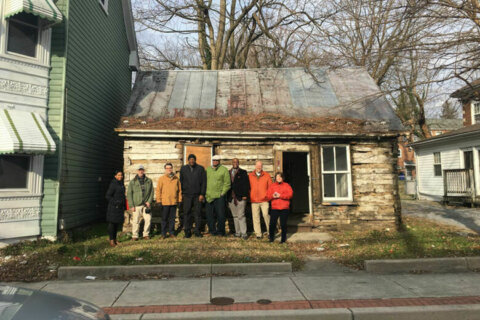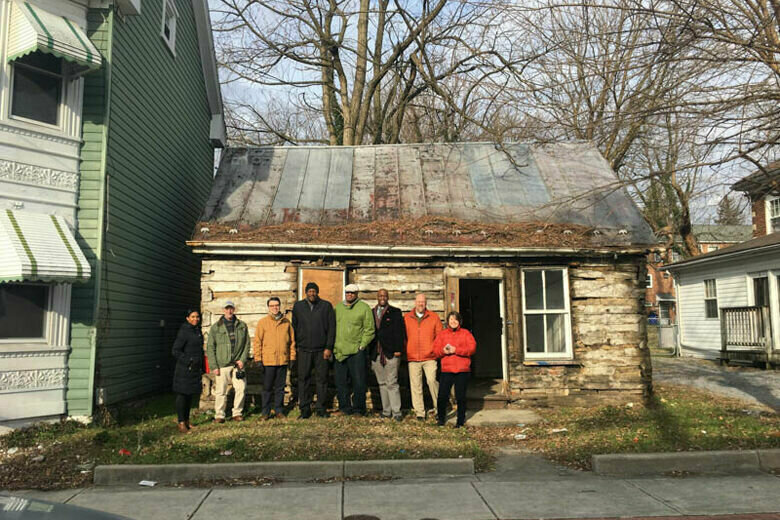
Researchers have confirmed that a historic home in one of Maryland’s oldest African American neighborhoods was built with 18th-century timbers.
A recently completed dendrochronology report — a science used to date events and archaeological artifacts using the characteristic patterns of annual growth rings in timber and tree trunks — confirmed that 417 North Jonathan Street in Hagerstown is constructed with of some of the city’s oldest timbers.
The findings, released in a new report, found that the timbers used in the historic structure were felled — cut down — in the winter of 1739 to 1740 and in 1740 to 1741 across the area.
It was not until the 1830s, that the timbers, which then were already in use as building material for nearly 100 years, were recycled to construct the cabin on Jonathan Street.
The research was summarized in a technical report prepared by Michael J. Worthington and Jane I. Seiter of the Oxford Tree-Ring Laboratory, a scientific historical research firm based out of Baltimore.
Samples from the logs were taken in September and compared against a master “tree-ring sample” for the region. In addition to the team being able to determine the age of the logs, they were able to note where they might have been cut down too.
“The sampled timbers matched particularly highly with reference chronologies from Washington and Frederick Counties in central Maryland,” according to the report.
The report said that its highest match was with a log house that formerly sat on the banks of the Antietam River in Hagerstown, “suggesting that the original log house these timbers were cut from was in all probability standing somewhere in Hagerstown before being demolished and reused for the log cabin at 417 Jonathan Street.”
Researchers and historians may never be able to determine the precise structure that these logs were first used, but the report states, “it is interesting and worthwhile to note that very few structures stood in Hagerstown in 1739, save for two cabins built by town founder Jonathan Hager in the late 1730s before the completion of his stone dwelling.
The date of Hager’s construction and the likelihood that a Hager heir owned the plot of land at 417 N. Jonathan Street around the period of the current cabin’s construction seems to suggest the potential that these logs once housed Hager himself — making the structure one of Hagerstown’s most historic.
The house is near two sites known to have been listed in the Green Book — a driver’s guide to Black-owned and Black-friendly businesses during the Jim Crow era.
The home was in danger of being demolished before it was bought by the group Preservation Maryland, which plans to fix it up and then collaborate with Habitat for Humanity to sell it as affordable housing.
The work is part of a bigger effort to revitalize the entire Jonathan Street neighborhood.
Preservation Maryland said it is actively working on the rehabilitation of the property through the organization’s Revolving Fund.
The project team includes the Maryland Department of Transportation and State Highway Administration, Western Maryland Community Development Corporation, and Habitat for Humanity Washington County among others.
“The legacy of this building and its layers of unique, diverse, and significant history speaks to the value of preservation — and the need to continue to invest and support the revitalization of the historic Jonathan Street community,” said Nicholas Redding, Executive Director of Preservation Maryland in a statement.
A map of the area is below.









